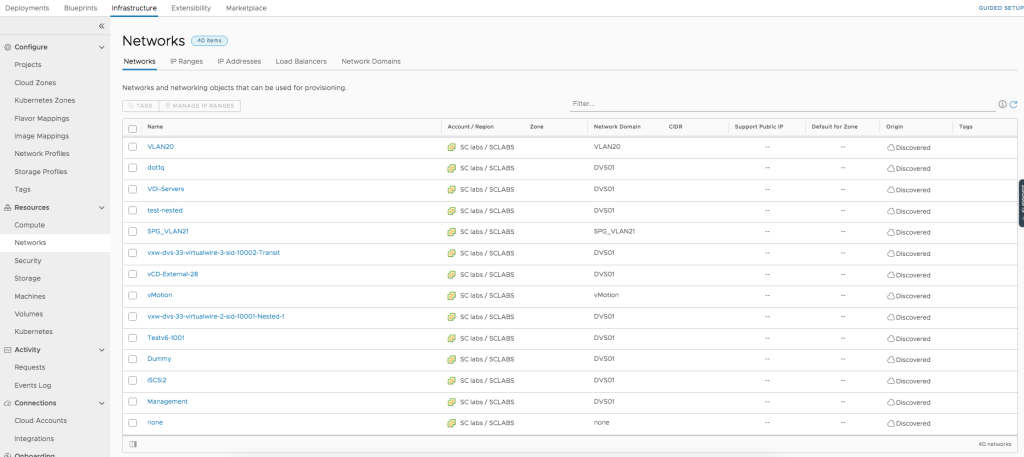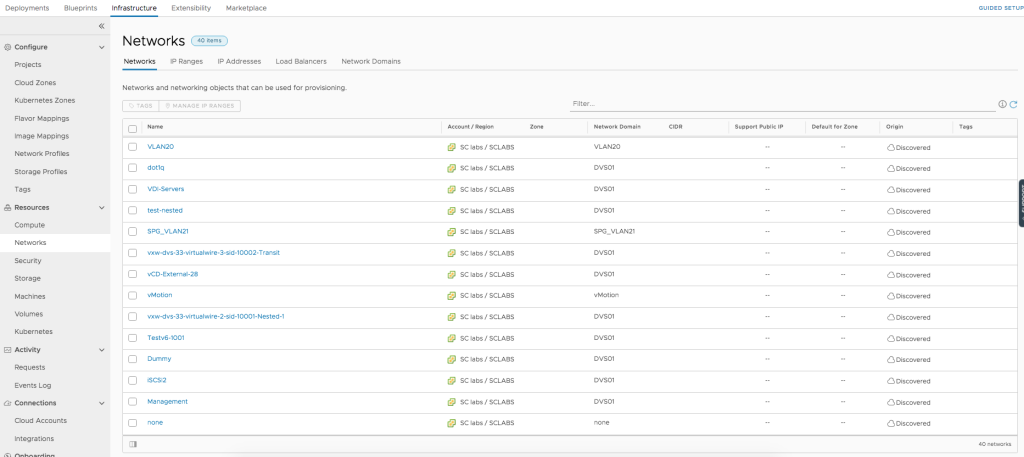Network Discovery and Configuration Overview
Like in vRealize Automation 7, setting up network configuration is crucial before being able to create blueprints.
Once a Cloud Account and a Cloud Zone has been configured, you can navigate to the Infrastructure > Networks page and find an overview of networks that have been discovered.
Streamlining Network Setup with vRealize Automation 8

In addition, vRealize Automation can also keep track about IP ranges. If you configure an IP range and provision a resource from within that range, vRealize Automation is also able to track those IP addresses. If you do not want to rely on the built-in IP adress management (IPAM), you can also integrate a third-party IPAM module. We will show how to integrate Infoblox IPAM in a later post, serving as DNS server as well as an IPAM system.
When provisioning a virtual machine, it is crucial to have network settings injected correctly. This includes the following information:
- Domain (The domain name is passed to the vSphere machine customization spec),
- An IPv4 CIDR
- An IPv6 default gateway
- DNS Servers
- DNS Search domains
- Support Public IPs (this can be used if you want mark the network as a public network, and match it to blueprints having the network type: public property configured).
- Default for Zone
- Tags
Setting these information within the network configuration is quite convenient. If your image templates work with DHCP and are using cloud-init for customization, then there is no need for the traditional guest specification anymore, as basic network settings will be injected via DHCP and all the rest via cloud-init (which is by far more powerful than the guest specification and have become a standard).





